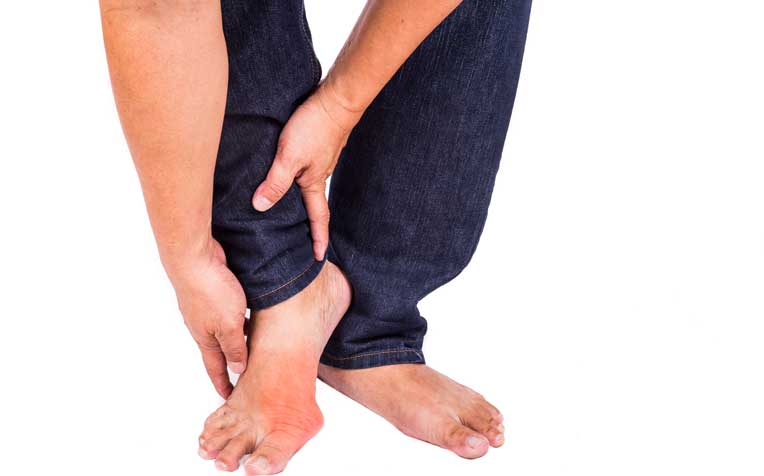HealthXchange will NEVER ask you to transfer money over a call. If in doubt, call the 24/7 ScamShield helpline at 1799, or visit the ScamShield website at www.scamshield.gov.sg.

Gout attacks can prevent the person from walking.
When Mr Zalfi Hasril first experienced an attack of gout, the pain in his ankle was so bad that he could hardly walk. He didn’t see a doctor but turned to a traditional Malay masseur because he thought the pain was due to a fall. The pain went away after about a week.
When he felt the same sort of excruciating pain a year later, Mr Zalfi decided to seek medical attention. After tests, he was found to be suffering from gout, a metabolic disorder that occurs when the kidneys are unable to get rid of excess uric acid. The acid ends up being deposited as crystals in the joint cartilage, tendons and surrounding tissues.
“Gout crystals deposited in the joints cause painful attacks, which is an inflammatory response,” said Dr Tan York Kiat, Senior Consultant, Department of Rheumatology and Immunology, Singapore General Hospital (SGH), a member of the SingHealth group.
Not everyone who has a high level of uric acid in the body will suffer from gout, but people with a persistently high level of the acid in their blood have a higher risk of getting the disorder, said Dr Tan.
Risk Factors
Gout often runs in the family, although diet also plays an important role. It was once known as a “rich man’s disease” as it tended to affect the upper class who could afford rich foods. Now, gout can affect any part of the population, including younger people, as they become richer, eat more meat, and drink more. “A Western diet of red meat, alcohol and seafood tends to be associated with gout,” said Dr Tan.
Gout is also linked to obesity, hypertension and diabetes. Some drugs like diuretics can cause gout as a side-effect.
Gout attacks come and go, and the intervals between painful flare-ups can be as long as months or even years. But as the disease progresses, the flare-ups become more frequent and the intervals shorter, Dr Tan said.
In addition, some chronic sufferers develop tophi, clumps of uric acid crystals that form around joints, tendons, ligaments, and even in their earlobes.
First sign of gout attack
The first sign of a gout attack is often a sudden, warm and throbbing pain in the affected joint. Within hours, this can rapidly escalate into excruciating pain, accompanied by swelling and redness of the joint. The skin around the joint will also be tender and sensitive, with the slightest touch causing extreme pain. Gout affects the big toe in about 90 per cent of people with the condition.
Read on for gout treatment and diet tips to prevent gout.
Ref: S13
Also, check out our other gout articles:
Gout: Causes, Symptoms and Risk Factors
Gout: Diet Tips and How to Manage Future Attacks
Contributed by
Related Articles
Conditions & Treatments
Public Events
Get the Health Buddy App
© 2025 SingHealth Group. All Rights Reserved.

















 Get it on Google Play
Get it on Google Play